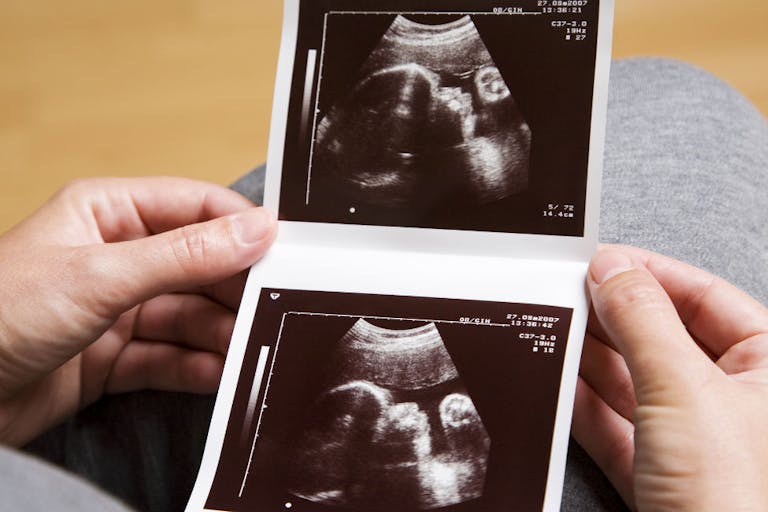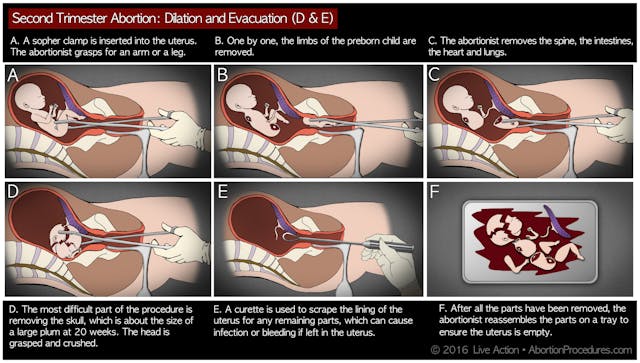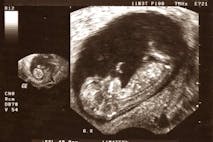
South Korea finds economic stability is key to encourage marriage and family
Angeline Tan
·
They left Idaho to abort babies diagnosed with disabilities. Now they’re suing the state.
Four women are suing the state of Idaho over its pro-life law, which prevented them from aborting their children who had received prenatal diagnoses. Ultimately, the women traveled out of state to kill their babies. Their pregnancies are being described as ‘dangerous,’ but were they?
The lawsuit was filed last year. It claims that the women suffered “unimaginable tragedy and health risks due to Idaho’s abortion bans,” and that doctors in the state have not received the necessary guidance on when induced abortion can be committed.
Idaho’s Defense of Life Act protects preborn children from abortion except to “prevent the death of the pregnant woman” and in cases of rape or incest. However, the law specifically states that if the mother’s life is at risk, the physician must have “in his good faith medical judgment and based on the facts known to the physician at the time, provided the best opportunity for the unborn child to survive, unless, in his good faith medical judgment, termination of the pregnancy in that manner would have posed a greater risk of the death of the pregnant woman.” In other words, if a pregnancy must end, the doctor must attempt to save the baby’s life unless it would be riskier to the woman’s life to do so. But an induced abortion carries the intent of killing the baby.
According to NBC News, a second law in Idaho allows private citizens to sue abortionists who carry out abortions after six weeks of pregnancy.
Neither law allows abortion in cases of prenatal diagnosis, such as when the preborn baby is diagnosed with Down syndrome, cystic fibrosis, spina bifida, triploidy, or other health conditions.
At a Glance:
Idaho law allows for abortion to prevent the mother’s death, and in cases of rape or incest. It also does not consider an unintentional injury to or accidental death of the preborn baby as a criminal abortion, nor does it allow a woman to be subjected to criminal penalties for an abortion.
Idaho law does not mention a lethal anomaly or life-limiting condition as an allowable reason for abortion.
All four plaintiffs appear to have sought abortions due to their children’s diagnoses of disabilities/lethal anomalies and not because of threats to their own health. All appear to be suing in an attempt to have this exception added to Idaho’s abortion law.
The plaintiffs’ attorney stated, “… the laws as written are not working.” However, Idaho’s law appears to be working as intended, since it does not name prenatal diagnoses among allowable abortion exceptions.
“We’re not trying to tell Idaho how it has to write its laws. We’re just saying that the laws as written are not working,” said Nick Kabat, an attorney with the Center for Reproductive Rights who is representing the plaintiffs. He was also a part of Zurawski v. Texas, a similar lawsuit in which the Texas Supreme Court ruled against the women who sued over seeking abortions.
The plaintiffs in the Idaho case are the Idaho Academy of Family Physicians, two doctors, and four women — Rebecca Vincen-Brown, Kayla Smith, Jennifer Adkins, and Jillaine St. Michel.
A diagnosis of triploidy at 16 weeks
Vincen-Brown learned at 16 weeks that her baby had abnormalities, including a compromised airway, a missing bladder, and a heart and brain that had not properly developed. Her doctor said she was likely going to miscarry, and testing later revealed that the baby had triploidy, a rare genetic condition when the baby has an extra set of chromosomes in each cell. Most children with triploidy die before birth but those with mosaic triploidy can live longer. Vincen-Brown and her husband decided to have an abortion and drove seven hours to Portland, Oregon, for the two-day procedure. According to NBC News, it appears to have been an induction abortion (explained in the video below):

“After the first day of the two-day procedure, Vincen-Brown passed the fetus in the hotel bathroom at around 4 a.m., with her 2-year-old daughter in the other room,” NBC reported.
“Deciding to have the abortion was probably the hardest decision of our life, but the trauma that came with it when we went to Portland was completely unnecessary and could have been 100% preventable,” Vincen-Brown said.
But the trauma she experienced because of the abortion would likely have existed regardless of where the abortion was carried out. Delivering a baby in a hotel room during an abortion is unfortunately not uncommon for women who have later abortions. Had she been at home rather than the hotel room, that trauma could still have occurred.
The Washington Surgi-Clinic abortion facility in Washington, D.C., was the focus of an undercover investigation by Live Action, and revealed that women are told they may give birth to the baby alone in their hotel rooms during the first portion of the two to three-day procedure. (The abortion facility, like many, has an arrangement with a nearby hotel for its abortion clients.) The nurse told an undercover journalist that “there is a possibility that you could go into premature labor.” The patient expressed concern about what hotel staff might think if this were to happen, but the nurse brushed off these concerns. She then asked the patient to sign paperwork stating that they spoke about the possibility of premature labor, reiterating, “You may go into premature labor and deliver the fetus in your hotel.” She added, “We could just tell you what to do with the remains.”
Babies with triploidy are usually miscarried early in pregnancy, but when they survive, their mother is at a higher risk of complications such as preeclampsia. If the baby is born alive, his or her survival depends on the severity of their symptoms. The mother would be monitored closely throughout the pregnancy and would deliver the baby should her health become compromised. Intentionally and directly killing the baby is not necessary.
A diagnosis of potential Down syndrome and heart concerns
Kayla Smith learned that her preborn son might have Down syndrome and that the left half of his heart was “barely formed.” A pediatric cardiologist said the heart condition was too severe to fix with surgery. Worried she would develop preeclampsia like she had during her first pregnancy, Smith wanted an abortion.
Article continues below
Dear Reader,
In 2026, Live Action is heading straight where the battle is fiercest: college campuses.
We have a bold initiative to establish 100 Live Action campus chapters within the next year, and your partnership will make it a success!
Your support today will help train and equip young leaders, bring Live Action’s educational content into academic environments, host on-campus events and debates, and empower students to challenge the pro-abortion status quo with truth and compassion.
Invest in pro-life grassroots outreach and cultural formation with your DOUBLED year-end gift!
“If I were to continue pregnancy not only would I risk my life with preeclampsia, I was not willing to watch my son suffer and potentially gasp for air,” said Smith. She and her husband took out a loan to pay the $16,000-$20,000 cost of injecting their son with a drug to put him in cardiac arrest and then delivered him stillborn.
She worried that he might suffer, despite the existence of palliative care to prevent suffering; she also worried she might die, despite doctors’ ability to care for her during her first pregnancy. But she did not need an induced abortion (which involves intentional killing), and her decision to have one raises concern that she only chose abortion because her son received a serious diagnosis. If her son had been “healthy,” would she have continued the pregnancy despite the risk of preeclampsia?
A diagnosis of Turner syndrome
Jennifer Adkins was 12 weeks pregnant with her second child when she learned her baby had Turner syndrome, a rare chromosomal abnormality in which a baby girl is missing an X or part of an X chromosome. Doctors said the baby was unlikely to survive and that Adkins may develop “Mirror Syndrome,” a condition in which the pregnant mother develops symptoms that mimic those of the baby. Doctors said they were surprised she had not miscarried yet, but in reality, babies with Turner syndrome can live a typical life and with treatment, enjoy a “typical lifespan,” according to Cleveland Clinic.
Still, Adkins wanted an abortion. But her baby was alive and her own health was not in danger. No doctor in Idaho was legally allowed to kill her living baby under these circumstances. So she traveled to get an abortion.
“We felt like we were being made refugees, medical refugees,” she said — though no one had forced them to travel to unnecessarily abort their daughter.
A ‘fatal’ diagnosis
At her 20-week ultrasound, Jillaine St. Michel was told that her baby had several medical concerns, including caudal regression syndrome, which is when the lower spine does not develop properly, the birth defect cystic hygroma, missing bones, and other concerns. Doctors said the baby was unlikely to survive, so St. Michel traveled to Seattle to have a two-day D&E dismemberment abortion.
In a D&E, the baby is removed from the womb in pieces as the abortionist uses a Sopher clamp to tear off the legs and arms before crushing the baby’s skull.

During the first day of the lawsuit trial, St. Michel admitted she had no complications up until that point. Dismembering her baby was not necessary; perinatal hospice for a child diagnosed with an expected near-immediate lethal anomaly is available to families for support.

Carolyn McDonnell, litigation counsel with Americans United for Life, told Live Action News, “The plaintiffs are asking for a broad health exception for elective abortions to Idaho’s pro-life law, even requesting the court to permit abortions for the mother’s mental health or other circumstances. Idaho’s law is consistent with modern medicine because it considers the health of both patients, the mother and unborn child. The lawsuit ignores the medical reality of a second patient in trying to contrive an abortion-on-demand exception to Idaho’s law.”
The plaintiffs hope their case will lead to a change in the law that would allow babies with prenatal diagnoses to be killed by abortion in Idaho. But regardless of the media narrative, none of these women needed an abortion to protect their own lives, and it appears they chose abortion because of their babies’ diagnoses.
Editor’s Note, 11/15/24: This post has been updated with a quote from a representative of Americans United for Life.
Call on President Trump to pardon the FACE Act prisoners on his first day in office.
Live Action News is pro-life news and commentary from a pro-life perspective.
Contact editor@liveaction.org for questions, corrections, or if you are seeking permission to reprint any Live Action News content.
Guest Articles: To submit a guest article to Live Action News, email editor@liveaction.org with an attached Word document of 800-1000 words. Please also attach any photos relevant to your submission if applicable. If your submission is accepted for publication, you will be notified within three weeks. Guest articles are not compensated (see our Open License Agreement). Thank you for your interest in Live Action News!

Angeline Tan
·
Fact Checks
Nancy Flanders
·
Fact Checks
Nancy Flanders
·
Fact Checks
Cassy Cooke
·
Fact Checks
Madison Evans
·
Fact Checks
Nancy Flanders
·
Politics
Nancy Flanders
·
Activism
Nancy Flanders
·
Issues
Nancy Flanders
·
Human Interest
Nancy Flanders
·
Investigative
Nancy Flanders
·